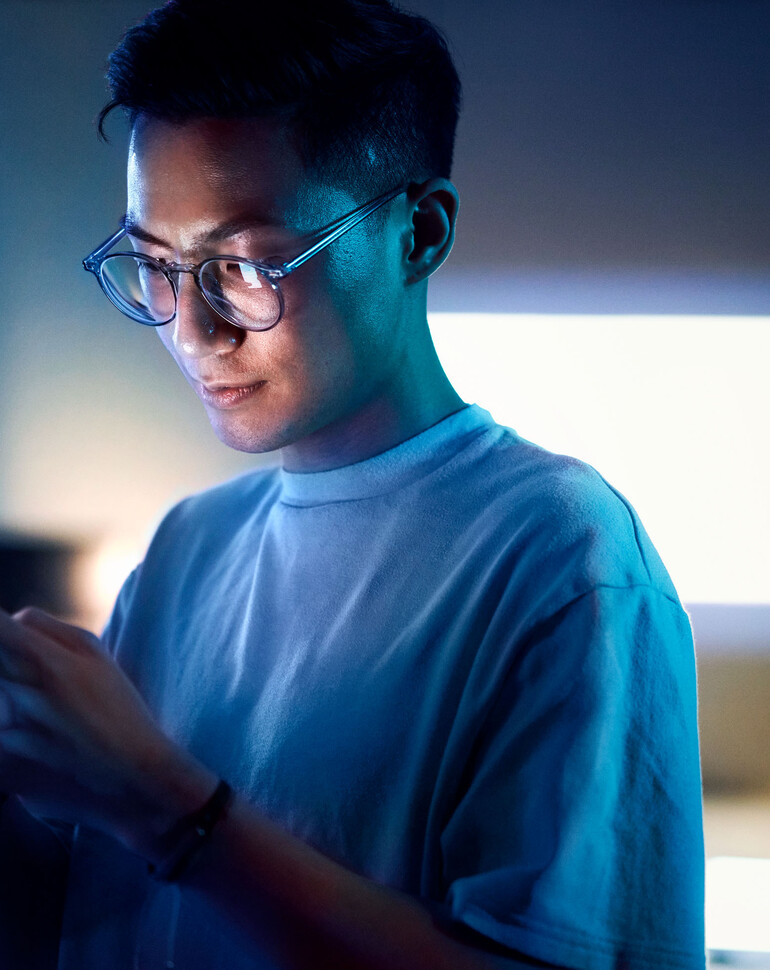What is blue light?
Blue light is a segment of the visible light spectrum, known for its short wavelengths and high energy, typically ranging from about 380 to 500 nanometres.
Approximately one-third of visible light consists of blue light. Sunlight is the biggest source of blue light (solar blue light). The blue light “dose” from standing outdoors on a sunny day is up to 50 times stronger than that received from a computer screen at a normal viewing distance.1
Other sources include:
- LED lighting
- Compact fluorescent light
- Incandescent lighting
- Computer screens
- Smartphones
The benefits of blue light exposure
Blue light is necessary to keep us awake. It suppresses the production of a hormone called melatonin and helps regulate our biological clock (circadian rhythm), promoting alertness during the day. However, this effect is undesirable at night. As our society spends more time indoors, you could be overexposed to blue light from various sources. Over exposure has potential risks, such as eye strain and eye fatigue, general fatigue and sleeplessness.2
Should I be concerned about blue light?
While natural sunlight has always been the primary source of blue light, we are now exposed to additional sources—such as digital screens and LED lighting—for extended periods throughout the day. Therefore, until the risks of this exposure are fully understood, it's prudent to take reasonable steps to limit blue light exposure when possible.3
Study has shown that over 80% of people use digital screens within 1 hour of going to sleep and being exposed to blue light from those electronic devices which could have a significant impact on sleep patterns.4 It is commonly known that viewing digital screens prior to sleeping in a dark or dimly light room can affect sleep and is unlikely to change.4
Decreased levels of light result in the body suppressing levels of serotonin and releasing melatonin, which helps with sleep.
Blue Light exposure can be managed with spectacle lenses and coating
There are a few easy ways to help reduce the amount of blue light we are exposed to on a daily basis. These are:
- Sunglasses
- Photochromic lenses
- Specialty coatings
- Specialty materials
- Reducing the intensity of indoor lighting during the night
Use the 'Night Shift' mode on your smartphone, especially at night
If you wear glasses, consider spending a little more on high quality glasses that reduce blue light for more relaxed and comfortable vision in a digital world.
Spectacle Lens MaterialsHOYA's spectacle lens materials, combined with HOYA's BlueControl coating, offer comprehensive UV protection and blue light reduction up to 20% between 380-500nm.5
|
|
BlueControl CoatingsHOYA BlueControl coating reduces the digital blue light that reaches the eye in the range of 440-460nm5 , designed for the modern digital lifestyle, helping to manage everyday blue light exposure from your morning run to your late-night digital wind-down. |
